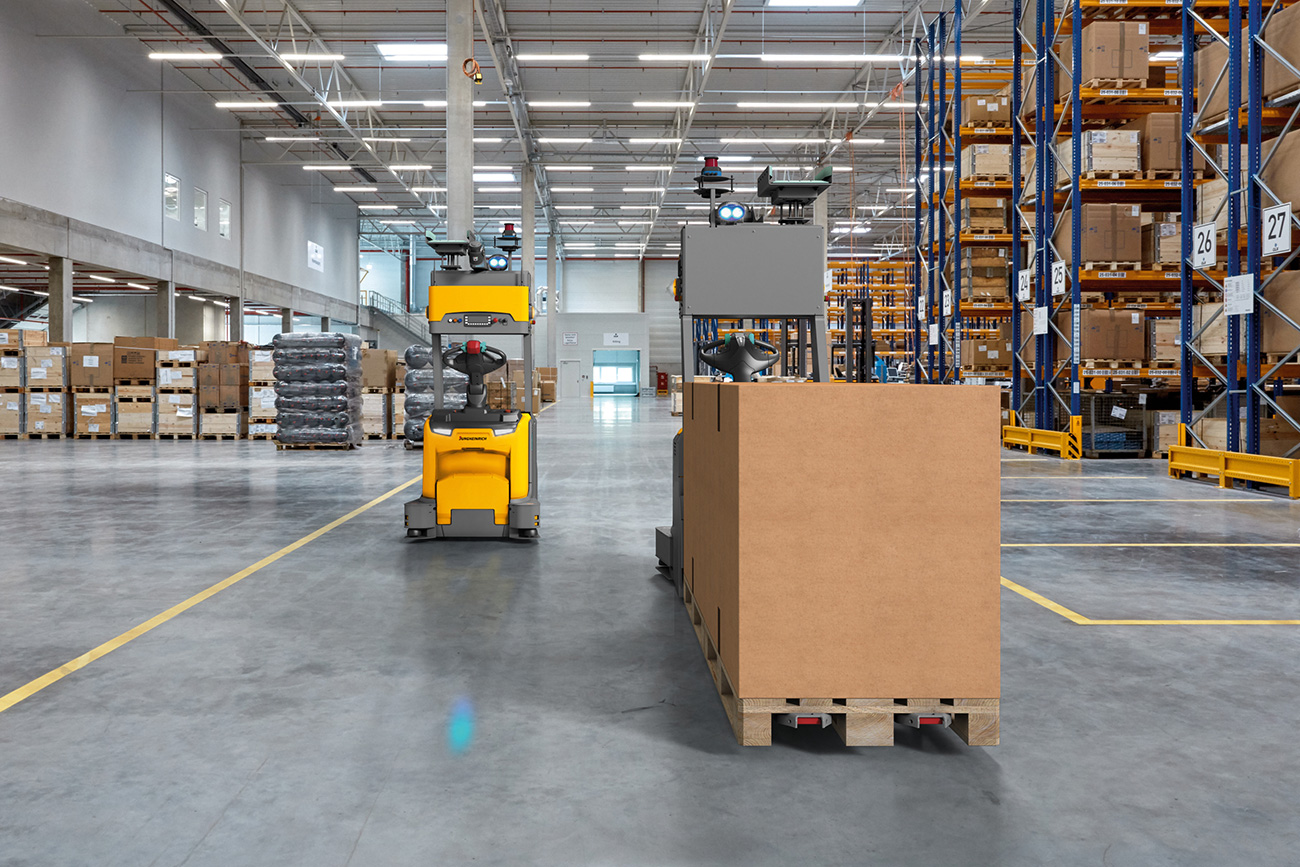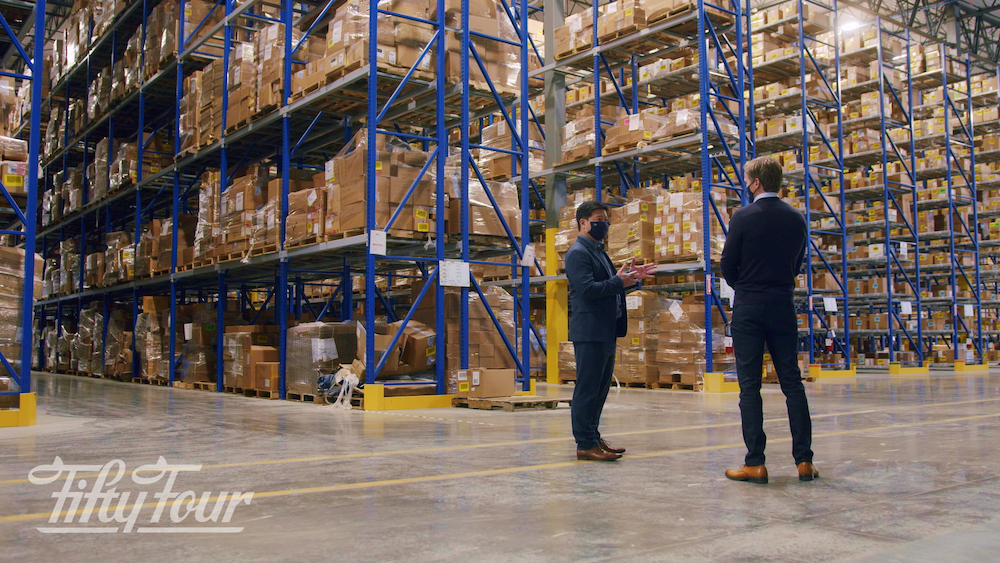
In today’s fast-paced and competitive business environment, optimizing warehouse operations is crucial for maintaining productivity and profitability. One of the most effective ways to enhance efficiency is by integrating advanced technology into forklifts and into warehouse management functions. By leveraging innovations such as automated forklifts, real-time tracking, and data-driven solutions, businesses can streamline operations, reduce human error, and improve overall safety. This technological transformation not only accelerates processes but also helps businesses keep pace with growing demand while maintaining high levels of accuracy and operational performance.

Key Ways Technology Creates Warehouse Efficiency
As technology plays an increasingly important role in warehouse operations, efficiently using solutions like Warehouse Management Systems (WMS), barcode scanners, and automated equipment drive value by improving accuracy, speed, and decision-making processes. By integrating these technologies, warehouses can streamline operations, improve accuracy, reduce costs, and create a safer work environment, ultimately driving greater efficiency across the entire operation. Technology can significantly boost warehouse efficiency in several key ways:
Real-Time Inventory Tracking and Management
With technologies like RFID, barcode scanning, and GPS, warehouse managers can track inventory in real time. This ensures accurate stock levels, reduces misplaced goods, and improves stock replenishment. Ensuring that key workers are well-trained in operating the systems and analyzing the data is important. Regularly counting inventory and ensuring stock levels are adequate for demand is a critical task. Knowing how to interpret maintenance needs, fixing errors in processing and daily usage of the equipment can assist with reducing downtime and optimize space. These key analytics can ensure smoother operations and quicker fulfillment as well as reducing costs and waste.
Warehouse Management Systems (WMS)
WMS software helps to optimize warehouse layout, inventory storage, and order picking processes. By analyzing data and providing real-time updates, WMS improves the accuracy of picking, sorting, and packing, resulting in fewer errors and faster order fulfillment. WMS can enhance quality control measures. Inspecting products for defects or damages and ensuring that orders are correctly filled are key quality control tasks. Workers help maintain the integrity of the warehouse operation by ensuring products meet the necessary standards before they are shipped to customers. Ensuring the proper documentation is completed during both incoming and outgoing shipments is crucial. Processing receipts, tracking shipments, and handling necessary paperwork, including bills of lading and invoices can be performed by a software solution, helping to maintain accurate records and prevent errors.
Data Analytics
By collecting data from various warehouse operations, businesses can analyze performance and identify areas for improvement. Predictive analytics can also anticipate demand spikes and optimize labor allocation, ensuring the warehouse is prepared for peak periods.
Mobile Solutions
Mobile devices and apps empower warehouse staff to access inventory data, receive instructions, and communicate in real time, reducing delays and improving decision-making.

Forklift Automation Improves Efficiency
Automated Guided Vehicles (AGVs) and autonomous forklifts can reduce the need for human drivers, leading to faster, more precise movements within the warehouse. These systems work continuously, minimizing downtime and increasing throughput while reducing human error. Electric forklifts provide an alternative to internal combustion engine forklifts and should be researched to see if the return on investment is in line with the warehouse operation and budgets. They provide more energy efficiency in the long run. Artificial Intelligence (AI) can be used to predict optimal routes for forklifts, improve order picking strategies, and even forecast inventory needs. Machine learning can refine these processes over time, creating a continuously improving cycle of efficiency. Robotics installed in forklifts can improve the workflow process from obstacle detection and threat identification to speed control and increased maneuverability. Sensors embedded in forklifts and equipment monitor performance and provide real-time feedback on maintenance needs, preventing costly breakdowns. They can also optimize traffic flow within the warehouse by tracking forklift locations and preventing congestion. Technology such as load sensing systems and telematics enhance performance of the forklifts.
With forklifts working throughout the warehouse floor, there is less need for operator involvement so that essential workers can focus on value-driven tasks. Following are examples where workers perform critical tasks that enhance the efficiency of the warehouse operations. These are also areas where automated systems in forklifts can greatly improve productivity.
Order Picking
One of the most fundamental and value-driving tasks is picking items accurately and efficiently for customer orders. The speed and accuracy of order picking directly impact delivery timelines and customer satisfaction. Workers must know how to use equipment like forklifts, pallet jacks, or handheld devices to retrieve the correct items.
Sorting and Packing
After items are picked, sorting them correctly for specific orders and ensuring they are packed securely for transportation is key. This task reduces shipping errors and returns, contributing to operational efficiency and customer satisfaction.
Loading and Unloading Shipments
Warehouse workers are responsible for unloading incoming shipments, checking for damaged or missing goods, and loading outgoing orders onto delivery trucks. This task must be completed quickly and accurately to maintain tight delivery schedules.
Equipment Maintenance and Safety
Maintaining and operating warehouse equipment like forklifts, conveyors, and pallet jacks is a critical task. Workers must also adhere to safety protocols, ensuring the warehouse is free of hazards and operating in compliance with regulations. This helps reduce workplace injuries and downtime.
Summary
Boosting forklift and warehouse efficiency through technology is essential for improving productivity and streamlining operations. By integrating innovations like automated forklifts, real-time inventory tracking, and advanced warehouse management systems, businesses can reduce manual errors, optimize workflows, and enhance safety. Technologies such as data analytics offer valuable insights, allowing companies to make informed decisions and respond quickly to changing demands. Overall, leveraging these tools not only speeds up processes but also increases accuracy, reduces costs, and improves the scalability of warehouse operations.
54 Intralogistics
54 Intralogistics offers integrated solutions for warehouse management systems that will maximize the efficiency and profitability of your warehouse or distribution center operations. The 54 Intralogistics team will review and analyze your warehouse logistics, layout, machinery, technology, workers and specifications. You can then expect valid suggestions to optimize processes from the loading and delivery dock to the packing and shipping area.
54 Intralogistics, created by Darr Equipment Company, can factor in forklifts and other equipment while designing your warehouse for increased efficiency. They have access to a number of forklift brands and will help determine which one is best for your operation. Contact us today!
